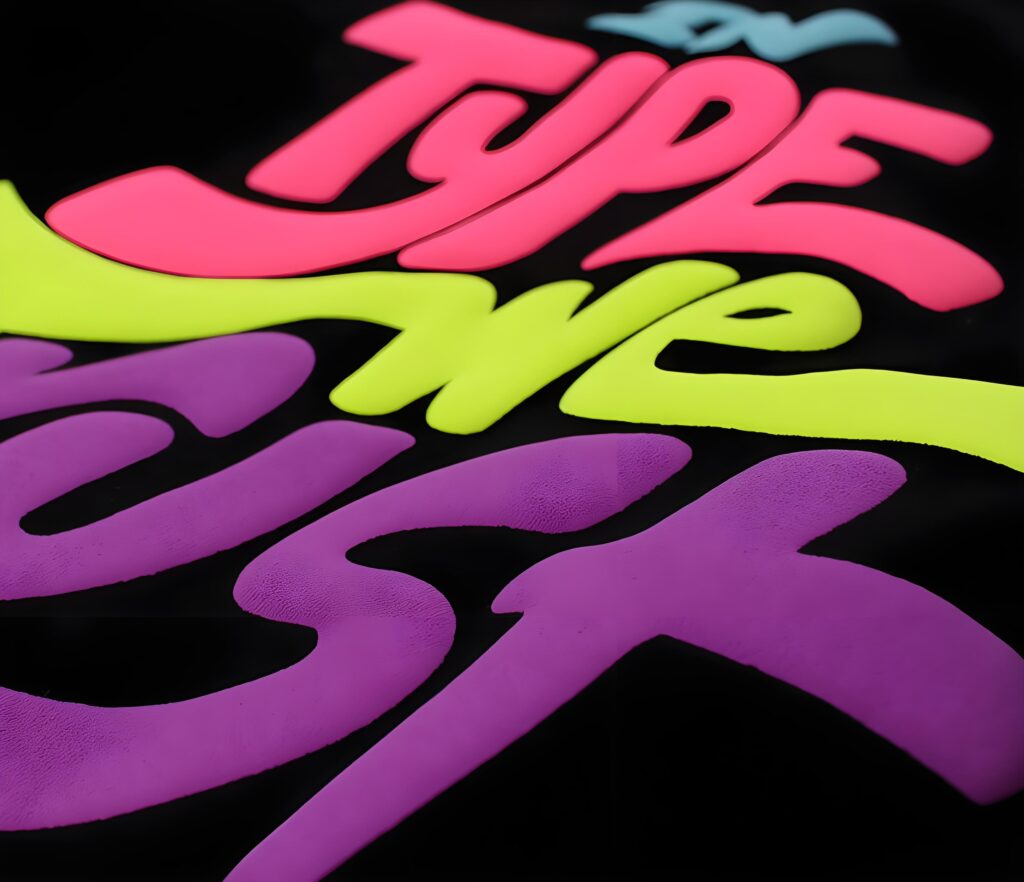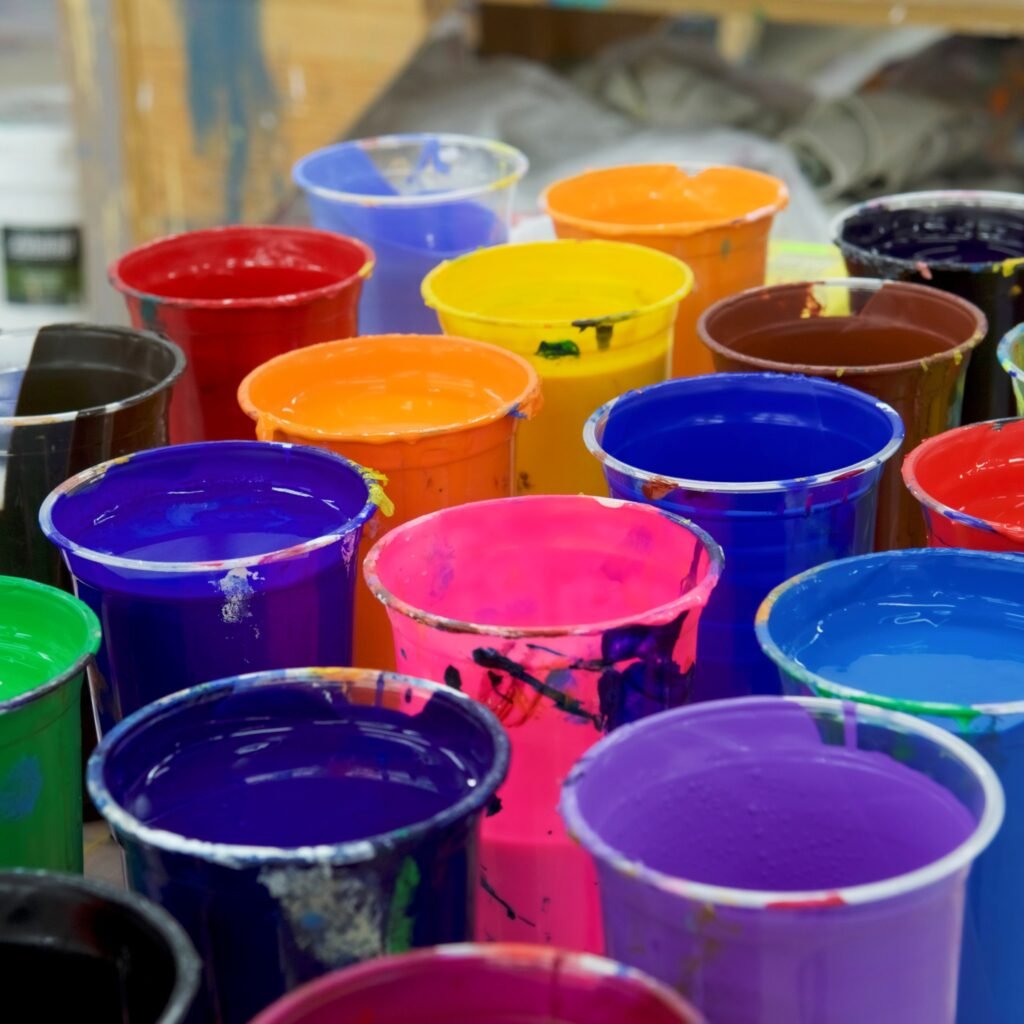Quick Summary: Key गुलाबी प्लास्टिसॉल शाई Takeaways
- Choose high-quality, high-opacity ink for optimal screen print results on light and dark garments alike.
- Plastisol ink remains the gold standard for durability, color accuracy, and versatility.
- Perfect your cure — manage dwell time and temperature to ensure flexibility, wash resistance, and no dye migration.
- Fluorescent pink and hot pink plastisol screen printing inks deliver pop, but need the right under-base and cure to shine.
- Low-cure and low-bleed plastisol inks protect against color shift and bleeding, especially for polyester and performance fabrics5.
- Always review data sheets and safety data before starting a production run.
- Master your screen printer gear: mesh counts, squeegee technique, and emulsion all influence ink deposit, opacity, and adhesion.
- International coatings and non-phthalate systems are safe, environmentally friendly, and excellent for vivid color design5.
- Always sample, test, and adjust—especially when printing complex, dark, or synthetic substrates.
- The right ink, the right cure, and a dash of creativity can turn every pink plastisol print into a memorable masterpiece!
Go forth. Print bold. Let your next pink screen print blaze under the spotlight!
निर्दोष गुलाबीची शक्ती अनलॉक करा: स्क्रीन प्रिंट आणि परिपूर्ण उपचारासाठी फ्लोरोसेंट गुलाबी आणि गरम गुलाबी प्लास्टिसॉल इंकसाठी मार्गदर्शक
The global of display print is brimming with coloration—and nothing grabs attention quite like a punchy fluorescent purple or a classic warm pink cured to perfection with the proper plastisol ink. If you want your garment to pop and your tasks to face out, know-how the proper ink, remedy, method, and products can be the important thing. Whether you’re a seasoned display screen printer or just entering the arena of fabric inks, this text is your must-read manual to achieving the brightest, maximum long lasting, and vivid pinks with global coatings, low-cure formulas, and professional guidelines for maximizing shade, opacity, and overall performance. Let’s delve into the colourful, technical, and creative world of red plastisol inks—your next masterpiece awaits! This blog guarantees actual human perception, realistic pointers, and the kind of professional recommendation you desire you’d continually had.
Outline: The Ultimate Guide to Fluorescent Pink Plastisol Ink for Screen Print and Perfect Cure
- What Makes the Best Ink for Screen Print?
- How Did Plastisol Ink Revolutionize Screen Printing?
- The Secret to a Perfect Cure: Why It Matters and How to Achieve It
- Understanding Data Sheets: Why Safety Data and Technical Details Matter
- What Sets Fluorescent Pink Apart in Plastisol Screen Printing Inks?
- Choosing and Using Pink Plastisol Ink: Tips for Color Design & Opacity
- Screen Printer Insights: Equipment, Mesh Counts, and Squeegee Tips
- Is low curing and coffee permeability plastic ink really worth the usage of?
- The Ultimate Printer Checklist: Substrate, Emulsion, and Underbase for Dark Garments
- International Coatings & Performance: The Role of Non-Phthalate, High Opacity, and Custom Mixing
1. What Makes the Best Ink for Screen Print?
Let’s begin at the start: no longer all ink is created same. When you seek that perfect, bold look on a t-blouse, hoodie, or maybe a overall performance jersey, the ink you pick out becomes your magic aspect. High-fine display screen printing inks are the backbone of reliable and desirable prints. Look for ink that offers high opacity, robust adhesion, and occasional bleed, especially whilst operating with darkish fabric or polyester blends. Your ink deposit’s richness, insurance, and sharpness on the garment make all of the distinction.
Another critical issue is the capability to work properly with various underneath-base alternatives. For mild colors, even a unmarried skate of ink can seem brilliant, however for dark colours and polyester, deciding on the proper underbase is important to prevent dye migration and reap immaculate opacity. Brands like international coatings have formulated pigments and ink systems to reply these needs, harnessing versatility, color accuracy, and opacity to boost your production run’s confidence.
2.How Did Plastisol Ink Revolutionize Screen Printing?
Plastisol ink modified the sport for display printers anywhere. Before its invention, attaining colourful, durable prints supposed struggling with dye migration, constrained color options, or brittle finishes. With plastisol ink, but, display screen print artists gained the capacity to print opaque, Pantone®-matched, and even inter-mixable hues without problems. The plastisol display technique doesn’t just depend upon the ink’s consistency—it empowers the screen printer to refine ink deposit, opacity, and ordinary appearance resultseasily.
Unlike water-based totally ink, plastisol ink is renowned for its ease of use and forgiving nature. The ability to print wet-on-moist, reduce bleed on dark fabric, and run longer manufacturing runs with out drying inside the display screen is valuable. Its superior adhesion on substrates like polyester, cotton, and blends ensures even complicated and multilayered prints can thrive on hoodies, sweatshirts, or athletic and amusement garments.

3.The Secret to a Perfect Cure: Why It Matters and How to Achieve It
The phrase “remedy” can feel a bit medical, but with regards to screen print, it’s the coronary heart of durability and vibrancy. Curing refers to heating your plastisol ink to a selected temperature (frequently 280 ranges Fahrenheit or 137ºC) so the ink molecules fuse and create a bendy, wash-evidence finish. If your therapy is spot-on, your print survives endless wash test cycles without cracking or fading—that’s robust adhesion in motion!
But what occurs while your remedy misses the mark? Under-cured ink can wash away or lose its pop, at the same time as over-curing could make your hot crimson or fluorescent red lose its glow or turn out to be brittle. Using low-treatment and occasional bleed options—like those in the tri-flex 1100 series plastisol—can help tackle elaborate polyester garments and artificial blends, improving dye migration resistance and upholding colour vibrancy. Always consult your ink’s records sheets for precise live time, substrate compatibility, and recommended panel temperatures
4. Understanding Data Sheets: Why Safety Data and Technical Details Matter
How many times have you skimmed past protection facts or technical statistics sheets? Don’t make that mistake! When managing any ink—especially plastisol ink or distinctiveness fluorescent pink alternatives—comprehensive protection statistics keeps your production secure, efficient, and in regulatory compliance.
Data sheets cover vital topics which includes advocated mesh counts (e.G., one hundred ten for athletic prints, 305 for element-rich designs), required emulsion thickness, ink deposit suggestions, and curable reducer use to first-rate-music viscosity and flow. For printers and commercial enterprise proprietors, careful attention to the protection facts phase enables manage potential dangers, specifically with non-phthalate completed ink blending structures. A little time invested in analyzing the records sheets can save you luxurious misprints, wasted clothes, and administrative center mishaps down the road.
5.What Sets Fluorescent Pink Apart in Plastisol Screen Printing Inks?
Fluorescent crimson isn’t just any other shade at the shelf—it’s a glance! This desirable colour achieves its trademark brilliance way to specific pigments formulated to reflect greater mild—making the ones prints bounce out in direct daylight and stand out in any crowd. True fluorescent pink plastisol ink leverages shade layout and high opacity, that means your prints look vivid even on darkish garments or difficult polyester blends.
However, getting the most out of fluorescent purple involves greater than grabbing any old can of ink. Look for series plastisol inks tailored for pop-effect finishes, wet-on-wet printing, and excessive ink deposit on complex substrates. Techniques like the usage of a blocker, white underbase, or print-flash-print technique assist you to remedy fluorescent red successfully and avoid bleed or opacity loss, specially on darkish colorations.
6.Choosing and Using गुलाबी प्लास्टिसॉल शाई: Tips for Color Design
When it involves pink plastisol ink, no longer all are created same and your design expectancies set the regulations. Some sun shades, like hot crimson or fluorescent crimson, want high opacity to “block” darkish garment backgrounds whilst turning in intense, saturated colour. For colour accuracy and opacity, pick inks specially formulated for robust performance on dark fabric, and take note of Pantone® matching in case you need logo consistency.
Remember, your under-base subjects for any crimson plastisol ink! Laying down a strong white underbase facilitates you achieve first rate shades on dark fabrics, and keeps your final print crisp, bold, and proof against dye migration. Always take a look at the overall performance of your plastisol display printing inks on pattern swatches before committing to a full manufacturing run. Adjust reside time and temperature as wished and strive a wash check to be sure your therapy holds up.
7.Screen Printer Insights: Equipment, Mesh Counts, and Squeegee Tips
Screen printing success is about finesse as much as it is about ink. The mesh count of your screen affects how much ink is deposited: lower mesh (like 110) is perfect for athletic and leisure garments, sweatshirts, or hoodies needing high ink deposit, while finer mesh (305 and above) creates phenomenal detail on light colors or thin prints1.
Your squeegee angle and speed impact ink deposit and coverage as well. For plastisol ink, a medium-to-firm sharp edge helps control the laydown, ensuring even coverage—not too thin, not too heavy. Equipment choices like an automatic press versus manual can also change the game. Always calibrate your emulsion thickness and ensure stencils allow for desired ink deposit—too thin and you might lose opacity, too thick and registration can suffer.
8. Is low curing and coffee permeability plastic ink really worth the usage of?
If you have ever been troubled via dye migration or ink infiltration into clothing fibers, low curing and occasional-permeability plastic ink may be your new favourite. These professional inks are regularly located in famous brands which include international coatings, and their formulations can therapy at lower temperatures – every now and then as low as 280 degrees Fahrenheit (137 º C) – thereby lowering the chance of dye migration and bleeding on complex polyester blends and dark fabric.
Why is that this important? Polyester fibers are vulnerable to liberating dyes at some stage in the warmth curing method, which can also damage your carefully designed crimson or fluorescent printing patterns. Low curing and low-permeability ink forms a barrier, stopping useless colour modifications; In addition, they can also defend artificial fabrics from thermal harm. If you frequently print on sportswear, jerseys, or hoodies, investing in low curing ink can make your manufacturing procedure run correctly whilst making sure faultless printing effects.

9.The Ultimate Printer Checklist: Substrate, Emulsion, and Underbase for Dark Garments
Before you start printing, create your own checklist. Your choice of substrate (the fabric or material), emulsion (for stencil creation), and underbase (usually a white or blocker layer) sets you up for success. Polyester, cotton, and blends each present unique opportunities and challenges for ink adhesion, opacity, and final finish.
For dark garments or athletic wear, always use a high-opacity white underbase to stop dye migration, brighten your pinks, and prevent bleeding. Adjust your emulsion for sharp, durable stencils, and remember to test your print setup with a quick wash test. Print-flash-print techniques (doing one print, a partial cure, then another print) help with tricky opacity or multi-layer builds, particularly when aiming for knockout results on hoodies and sweatshirts.
10.International Coatings & Performance: The Role of Non-Phthalate, High Opacity, and Custom Mixing
What elevates a basic ink into a professional’s secret weapon? It’s all about formulation. International coatings lead the way with non-phthalate finished ink mixing systems—these are safer for you, your team, and the environment. High-opacity ink mixtures mean your fluorescent and pink shades will cover any base, adding value and confidence to every screen print job.
Custom Pantone®-matched mixing (using a curable reducer or special pigment set) lets you achieve unique shades or match client requests precisely. Tri-flex 1100 series plastisol is a favorite for its low-cure, low-bleed chemistry that works wonders for polyester and blended garments. Whether you’re manufacturing plastisol transfers, direct printing, or exploring new color design possibilities, strong technical performance and reliable cure fluorescent pink results are within reach when you use the right international coatings ink system.



